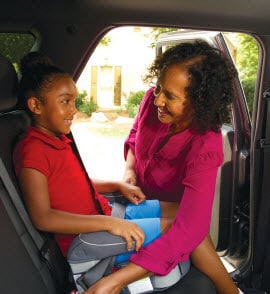ICRC Research Impact: Preventing Opioid Overdoses
Just the facts
Every day in the United States, 174 people die from an opioid-related overdose. West Virginia’s overall age-adjusted drug overdose death rate has been on the rise since the late 1990s and is now the highest in the nation (52 deaths per 100,000 people in 2016). This alarming rate is associated with increased use of both prescription opioids and illicit opioids, such as heroin. While most prescription opioid users do not become heroin users, 3 out of 4 new heroin users report having abused prescription opioids before trying heroin.
What we know about prevention
Safe and informed prescribing practices can reduce overdoses from prescription opioids, but other prevention strategies need to be in place as well. Naloxone is a highly effective prescription drug that can reverse an opioid overdose if administered in time, typically by someone who is on the scene when, or shortly after, an overdose occurs. Over the past two decades, take-home naloxone programs have been tested in many urban cities in the United States. These programs feature a brief educational session that teaches people who use drugs and their relatives and friends, how to recognize and respond to an overdose—by calling 911, performing rescue breathing, placing the person in a rescue position, administering naloxone, and by staying with the person until medical help arrives. Following the educational session, participating physicians write prescriptions for, and may provide naloxone to, program participants. In a recent survey of opioid overdose prevention programs in the United States that use the take-home naloxone approach, the 136 responding organizations represented 644 local sites that distributed a total of 152,283 naloxone kits to laypersons (users, family members, friends, etc.) from 1996 through June 2014. The survey showed that of the 109 organizations that collected reports, 26,463 were used for overdose reversals.
Determining the feasibility of take-home naloxone programs in a rural setting
During a review of the literature on overdose prevention, West Virginia University Injury Control Research Center (WVU ICRC) researchers identified take-home naloxone programs as effective interventions in urban settings, and wondered if such programs could be effective in a rural state such as WV. To determine the feasibility of such programs among prescription opioid abusers in rural WV, the ICRC conducted a study in partnership with the WVU’s Clinical and Translational Science Institute and the state’s regional Substance Abuse Task Force. Investigators identified demographic and drug use characteristics and attitudes toward overdose prevention and the use of naloxone among nonmedical users of prescription opioids. Findings showed that take-home naloxone programs could be adapted to WV. Additionally, WVU ICRC researchers prepared a white paper summarizing the evidence in the literature for take-home naloxone programs and outlined policies that other states had adopted to facilitate such programs by protecting participants from liability and prosecution. According to Dr. Jeffrey Coben, former WVU ICRC Director, “We made a conscious decision to conduct a systematic review of the literature and put it out for the world to see. West Virginia was clearly in the middle of an epidemic.”
Raising awareness and serving as a catalyst for effective intervention
The resulting white paper helped educate, mobilize, and unite key stakeholders around the issue of prescription drug overdose prevention. The ICRC’s relationship with the Substance Abuse Task Force led to an invitation to share findings in six regional meetings across the state with legislators, key health care and injury prevention professionals, substance abuse treatment and recovery specialists, and state advisory groups and coalitions. Pressure built to find a way to pilot take-home naloxone programs in WV, leading the WVU ICRC to organize a pivotal, state-level meeting with an extensive audience that included legislators, medical practitioners, and other key stakeholders and state programs covering justice and community services, public health, injury and violence prevention, and substance abuse prevention. The Director of Project Lazarus—a well-known North Carolina-based nonprofit organization that focuses on overdose prevention—also attended, providing participants with an overview of the comprehensive, community-level overdose prevention model used in NC. Participants agreed on the need to pursue naloxone distribution initiatives in WV. “The ICRC was now in a position of leadership,” said Herb Linn, WVU ICRC Deputy Director. “We became ‘go to’ experts, resulting in invitations to speak to other coalitions and partnerships around the state. We began to learn ‘who’s who’ and to network with key partners.”
Translating research into programs and policies
The WVU ICRC’s research and subsequent training and outreach activities have leveraged CDC funding to garner additional resources and to spawn several program and policy initiatives that are already saving lives.
- The WVU ICRC provided evidence to policy makers who used the data to inform two key pieces of legislation that were important for implementing naloxone programs in WV. The first bill—Senate Bill 335 (2015)—authorizes naloxone prescriptions to first responders and to active drug users and their family members, friends, and caregivers, and protects health care providers who prescribe them from liability. The second is a Good Samaritan law—Senate Bill 523 (2015)—that provides limited immunity from prosecution for drug users and those who assist them with naloxone. Both bills were adopted and signed into law in 2015
- A substance abuse treatment program in the Eastern Panhandle initiated a naloxone distribution program for patients and their family members and friends on September 2, 2015. Prior to the program launch, discussions with local pharmacists uncovered a major barrier facing this program: the requirement that physicians receive prior authorization before prescribing naloxone vials and syringes to addicted patients. WVU ICRC connected the program director with the State Director of Pharmacy Services, and that requirement was removed, relieving physicians of the administrative burden and potential liability. Additionally, WVU ICRC provided donated naloxone administration kits for use by the program
- A pilot program in designated WV day report centers for high-risk offenders—either sentenced by drug courts or on probation or parole from the criminal justice system—provides take-home naloxone, in collaboration with the Division of Justice and Community Services, WV Department of Military Affairs and Public Safety. One center in Marion County is now operational, with two others close behind. WVU ICRC and its state partners plan to explore the expansion of take-home naloxone programs to the remaining day report centers across the state
- A WVU Law Enforcement Naloxone project trains police officers to carry and administer naloxone. The WVU ICRC acquired naloxone administration kits from Project Lazarus and adapted them for use by local police officers. To facilitate successful implementation of the program, the WVU ICRC developed a set of tools and templates, and adapted a state-required training to include additional components tailored for local agencies. The training was designed by WVU’s Center for Simulation Training and Education for Patient Safety (STEPS). The WVU ICRC and STEPS have provided these tools to police departments in other counties and are formalizing the toolkit for dissemination to all WV law enforcement agencies. “The toolkit includes a checklist for planning a program, along with a model standing order, naloxone administration protocol, and a reporting form that makes it easier for other police agencies to plan and implement such programs,” said WVU ICRC Deputy Director, Herb Linn
- The WVU ICRC has also initiated discussions in several other high-risk communities in WV that have led to the launch of naloxone distribution in harm reduction programs that offer syringe exchange and free clinic services, and in additional substance abuse treatment and first responder (law enforcement and fire service) programs
In addition, because the WVU ICRC is housed in a university setting, it is well-positioned to educate WVU students and professors on overdose and other injury-related issues through classes, grand rounds, and other forums. In Dr. Jeffrey Coben, former WVU ICRC Director’s view, “There is no question that this has had a huge impact in our own institution, how it views injury, substance abuse, and overdose.” As solid evidence of that institutional commitment, the new Vice President for WVU’s Health Science Center recently identified injury prevention as 1 of 4 top priorities for the university and WVU President E. Gordon Gee singled out the Law Enforcement Naloxone Program as a significant achievement of the university on the health care front.
To learn more:
West Virginia University Injury Control Research Centerexternal icon

